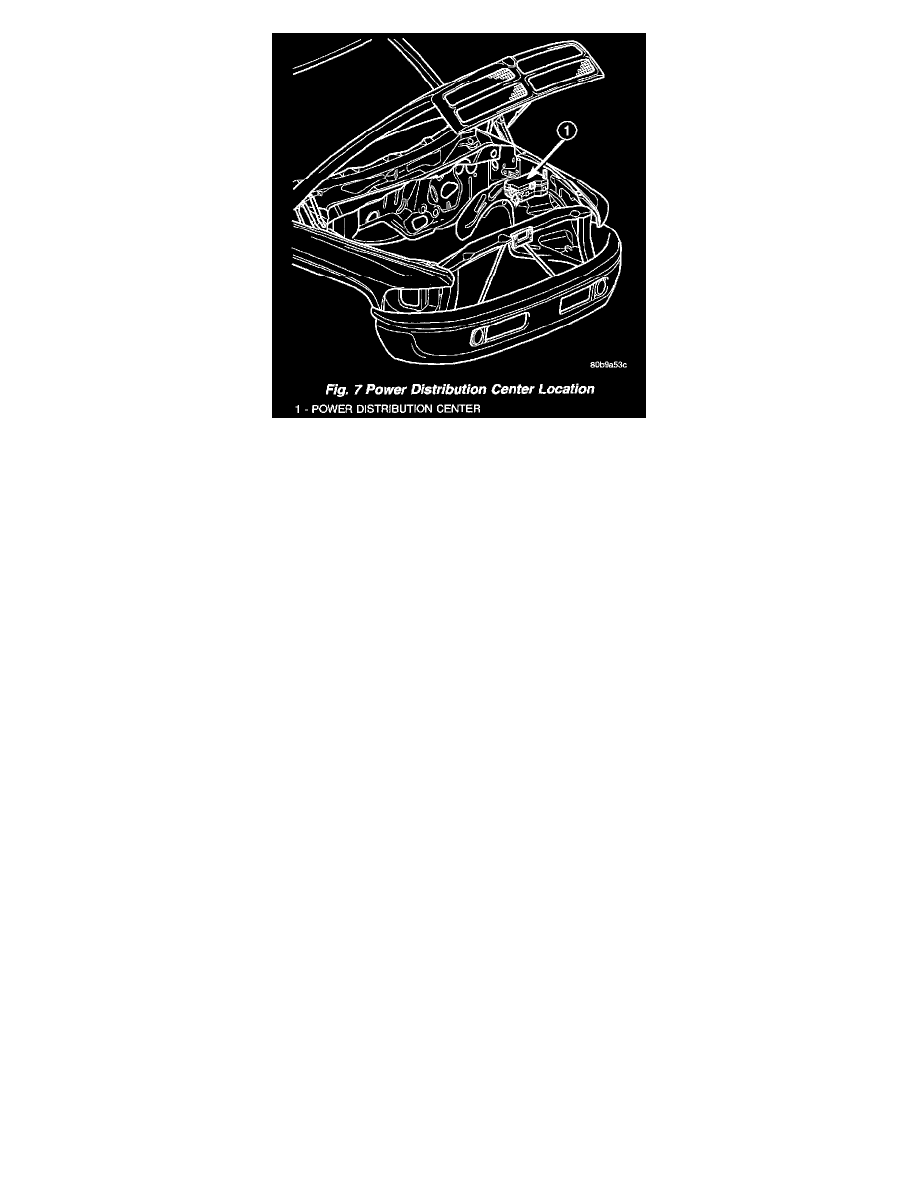RAM 2500 Truck 4WD L6-5.9L DSL Turbo VIN 7 (2001)

Fig.7 Power Distribution Center Location
POWER DISTRIBUTION CENTER
All of the electrical current distributed throughout this vehicle is directed through the standard equipment Power Distribution Center (PDC) (Fig.
7). The molded plastic PDC housing is located in the left front corner of the engine compartment, just behind the battery. The PDC houses the
generator cartridge fuse and up to twelve maxi-type cartridge fuses,which replace all in-line fusible links. The PDC also houses up to thirteen
blade-type fuses (two standard- type and eleven mini-type), up to seventeen International Standards Organization (ISO) relays (five standard-type
and twelve micro-type), two joint connectors (one eighteen-way and one twenty-eight-way), a forty-three-way engine wire harness in-line
connector and a fuse puller.
The PDC housing is secured in the engine compartment on the outboard side with two screws to the left front inner fender shield, and with a screw
on the inboard side to the left front inner wheel house. The PDC housing has a molded plastic cover that includes two integral latches, one on each
side. The PDC cover is easily opened and removed for service access and has a convenient adhesive-backed fuse and relay layout map affixed to
the inside surface of the cover to ensure proper component identification.
The PDC unit cannot be repaired and is only serviced as a unit with the headlamp and dash wire harness. If the internal circuits or the PDC
housing are faulty or damaged, the headlamp and dash wire harness unit must be replaced.
All of the current from the battery and the generator output enters the PDC through two cables with eyelets that are secured with nuts to the two
B(+) terminal studs located just inside the inboard end of the PDC housing. The PDC cover is unlatched and removed to access the battery and
generator output connection B(+) terminal studs, the fuses, the relays, the joint connectors and the engine wire harness in-line connector. Internal
connection of all of the PDC circuits is accomplished by an intricate combination of hard wiring and bus bars. Refer to Power Distribution for the
location of complete PDC circuit diagrams.
POWER OUTLET
An accessory power outlet is standard equipment on this model. The power outlet is installed in the instrument panel below the cigar lighter and
next to the ash receiver, which is located near the center of the instrument panel, below the radio. The power outlet base is secured by a snap fit
within the instrument panel. A plastic protective cap snaps into the power outlet base when the power outlet is not being used, and hangs from the
power outlet base mount by an integral bail strap while the power outlet is in use.
The power outlet receptacle unit and the accessory power outlet protective cap are available for service. The power outlet receptacle cannot be
repaired and, if faulty or damaged, it must be replaced.
The power outlet base or receptacle shell is connected to ground, and an insulated contact in the bottom of the shell is connected to battery current.
The power outlet receives battery voltage from a fuse in the Power Distribution Center (PDC) at all times.
While the power outlet is very similar to a cigar lighter base unit, it does not include the two small spring-clip retainers inside the bottom of the
receptacle shell that are used to secure the cigar lighter heating element to the insulated contact.
